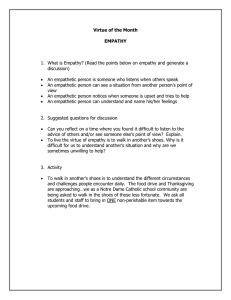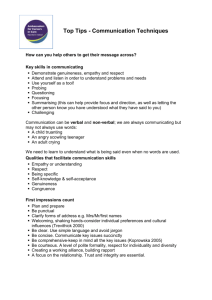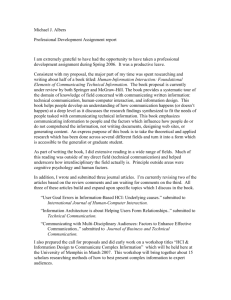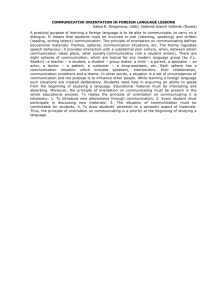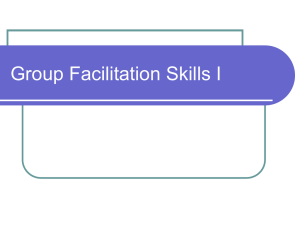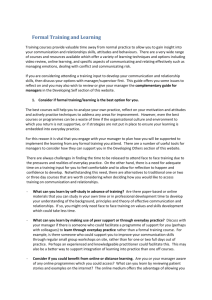Notes-on-Crisis-Intervention
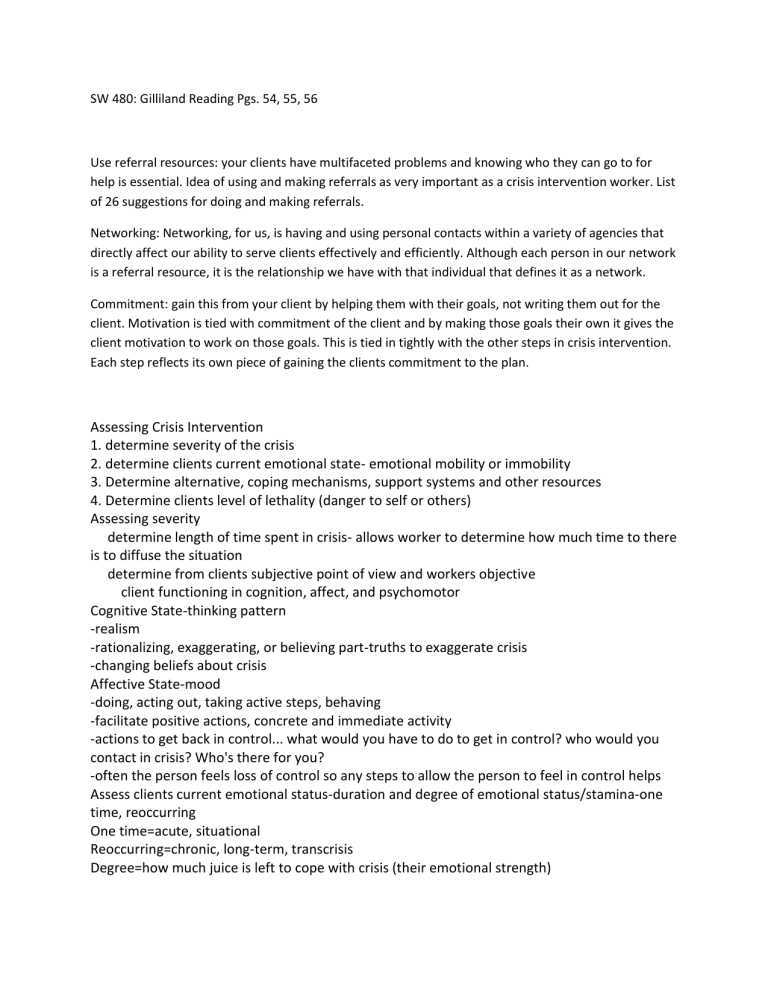
SW 480: Gilliland Reading Pgs. 54, 55, 56
Use referral resources: your clients have multifaceted problems and knowing who they can go to for help is essential. Idea of using and making referrals as very important as a crisis intervention worker. List of 26 suggestions for doing and making referrals.
Networking: Networking, for us, is having and using personal contacts within a variety of agencies that directly affect our ability to serve clients effectively and efficiently. Although each person in our network is a referral resource, it is the relationship we have with that individual that defines it as a network.
Commitment: gain this from your client by helping them with their goals, not writing them out for the client. Motivation is tied with commitment of the client and by making those goals their own it gives the client motivation to work on those goals. This is tied in tightly with the other steps in crisis intervention.
Each step reflects its own piece of gaining the clients commitment to the plan.
Assessing Crisis Intervention
1. determine severity of the crisis
2. determine clients current emotional state- emotional mobility or immobility
3. Determine alternative, coping mechanisms, support systems and other resources
4. Determine clients level of lethality (danger to self or others)
Assessing severity
determine length of time spent in crisis- allows worker to determine how much time to there is to diffuse the situation
determine from clients subjective point of view and workers objective
client functioning in cognition, affect, and psychomotor
Cognitive State-thinking pattern
-realism
-rationalizing, exaggerating, or believing part-truths to exaggerate crisis
-changing beliefs about crisis
Affective State-mood
-doing, acting out, taking active steps, behaving
-facilitate positive actions, concrete and immediate activity
-actions to get back in control... what would you have to do to get in control? who would you contact in crisis? Who's there for you?
-often the person feels loss of control so any steps to allow the person to feel in control helps
Assess clients current emotional status-duration and degree of emotional status/stamina-one time, reoccurring
One time=acute, situational
Reoccurring=chronic, long-term, transcrisis
Degree=how much juice is left to cope with crisis (their emotional strength)
Crisis Intervention is a shorter process, so it is important to have accurate and well-honed listening skills.
empathy, genuineness, and acceptance are the three necessary conditions for client
growth.
Communicating Empathy - (4 components: attending , verbally communicate empathetic understanding, nonverbally communicate empathetic understanding, silence as a way of
communicating empathetic understanding)
o Attending - looking, acting, and being attentive (eye contact, tone, right attitude) o o
Verbal empathy
Nonverbal
- communicating an understanding of the client's emotions
- picking up on the unspoken messages and behaviors (through their body o posture, movement, pitch, grimaces, etc). Be aware of your own body, voice, and face.
Silence - is golden. Clients need time to think. It essentially tells the client, "I understand your struggle to put those feelings into words."
Communicating Genuineness - being role free, spontaneous, non defensive, consistent, a sharer of self.
Communicating Acceptance - exudes a positive regard for the clients that transcends their personal qualities, beliefs, problems, situations, or crises.
Worker is able to put aside personal, needs, values, and desires.

